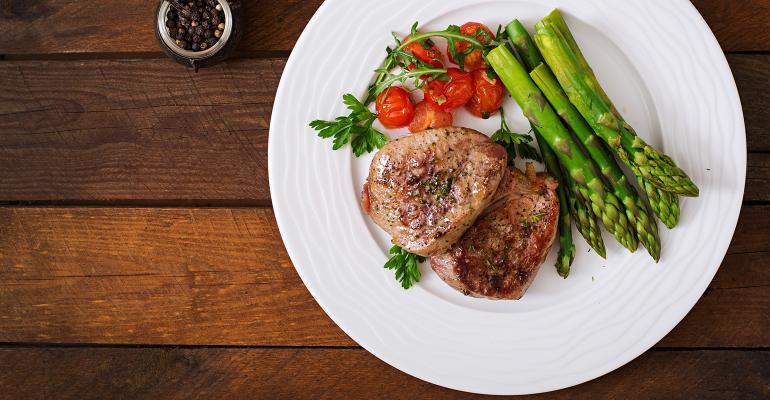At this year’s Annual Meat Conference, meal kits were a hot topic of conversation. Are they a threat? An opportunity? The answer to both questions is yes, according to Jill Tomeny, a senior manager for fresh category solutions at Daymon, a private brand and consumer interactions company.
Tomeny’s presentation at the conference, held in Nashville’s Gaylord Opryland Resort & Convention Center in late February, covered the growing meal kit industry and what it means for retailers and their meat.
She started by giving some perspective.
Yes, the meal kit industry is growing. It’s estimated that the industry finished 2017 with $5 billion in sales. But that’s less than 1% of supermarket sales, she said. Of course, it's that big jump in sales that is so appealing to retailers.
For retailers who want to cash in on the trend, “one thing to remember when you're talking about meal kits is answering the question, ‘what's for dinner tonight?’” Tomeny said.
Luckily, retailers have lots of answers at their fingertips.
“Consumers indicate that there are multiple fresh solutions that will answer that question, everything from freshly prepared grab-and-go items, to heat-and-eat, to hot and cold food bars, to made-to-order fresh food, along with meal kits,” she said. “If there was some magical place you could get all those fresh food solutions, we'd be in luck. Well, you're probably working at one. Because grocery retail can do all of that and solve all of our customers' needs.”
Retailers are in a great position to answer customers’ needs for quick meals.
Consider antibiotic-free (ABF) meat and poultry, grass-fed beef and cage-free eggs fresh, local and natural ingredients when preparing meal solutions. Research indicates that meal kit shoppers are health-conscious consumers, said Tomeny.
Carefully choose where to position meal solutions, said Tomeny. These meals might be one of the pricier items in a store.
“If you're in a grocery store and you're surrounded by 39-cent bananas and $2 boxes of cereal, $20 [a typical price for a meal kit for two] is a huge thing,” she said. “Where do you put them? You don't put them by the 39-cent bananas. Put them back in the meat department, seafood. Show them just how value-added they are compared to the rest of the department, plus you'll have a bonus of having price points nearby that are closer to that $20 range. It'll make it a little softer. And then [put meal solutions near] grab-and-go. The name of the game in meal kits is convenience. So, make sure you have a place up front. Walk in, grab a kit, cash out. Go.”
Retailers may also want to use meal solutions as a way to introduce customers to unfamiliar cuts of meat, said Tomeny.
“Meal kits provide a chance to educate customers,” she said. “Say you're launching a grass-fed beef program, and you're afraid your customers aren't going to succeed with it because they don't know how to cook it. Put it in a meal kit that'll teach people what it's going to taste like, how to cook it.”
Finally, listen to feedback, said Tomeny. “When you're testing your recipes, if there's not enough meat, people don't feel like they're getting enough meat. They're going to let you know.”
Contact Gloria Dawson at [email protected]
Follow her on Twitter: @gloriadawson





